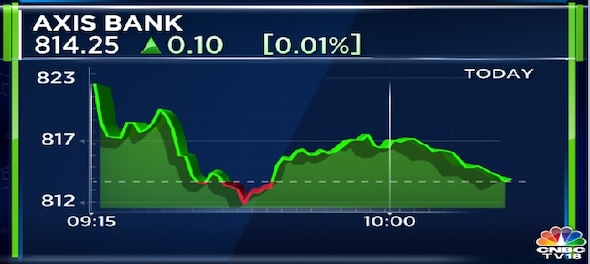
Joining peer lenders, Axis Bank has has raised the marginal cost of funds-based lending rate (MCLR) by 25 basis points (bps) percent across tenors from October 18 i.e. today. As a result, the equated monthly installments (EMIs) will get expensive for those who avail loans benchmarked against the MCLR.
Live TV
Loading...
What is the increase?
According to Axis’s website, overnight and one-month MCLR stand at 8.15 percent. The three-month MCLR is now at 8.25 percent and six-month at 8.30 percent. One-year MCLR has been pegged at 8.35 percent and two-year at 8.45 percent.
Who will be impacted?
As mentioned, EMIs will get expensive for those who take loans against the MCLR. The one-year MCLR is imperative as a bank's long-term loans like home loans are linked to this rate.
There is a reset-period for MCLR based loans, after which the rates get revised for the borrower.
Why are banks raising rates?
Along with Axis Bank, other banks are also raising lending rates.
This decision comes in the wake of Reserve Bank of India (RBI) increasing benchmark policy rates by 50 bps last month to tame headline inflation. With this repo rate hike and three previous increases, the overall lending rates have surged by at least 190 basis points, or 1.9 percent.
Why are loans impacted by RBI's decision?
Generally, when RBI hikes the repo rate, it increases the cost of funds for banks. This means that banks will have to pay more for the money they borrow from RBI. Consequently, banks pass on the cost to borrowers by increasing their loan interest rates, making EMIs costlier.
As a result, both new and existing borrowers witness an increase in their loan interest rates.
(Edited by : Anshul)
First Published: Oct 18, 2022 12:05 PM IST
Check out our in-depth Market Coverage, Business News & get real-time Stock Market Updates on CNBC-TV18. Also, Watch our channels CNBC-TV18, CNBC Awaaz and CNBC Bajar Live on-the-go!


Lok Sabha elections 2024: All you need to know about EVMs and VVPAT; how they work
Apr 20, 2024 1:24 PM
Odisha Lok Sabha elections: Schedule, total seats, Congress candidates and more
Apr 20, 2024 11:39 AM
Lok Sabha Election 2024: Issues raised by Prime Minister Modi have not resonated with people of Tamil Nadu, says Congress
Apr 19, 2024 11:38 PM
West Bengal Lok Sabha elections 2024: A look at Congress candidates
Apr 19, 2024 8:45 PM

